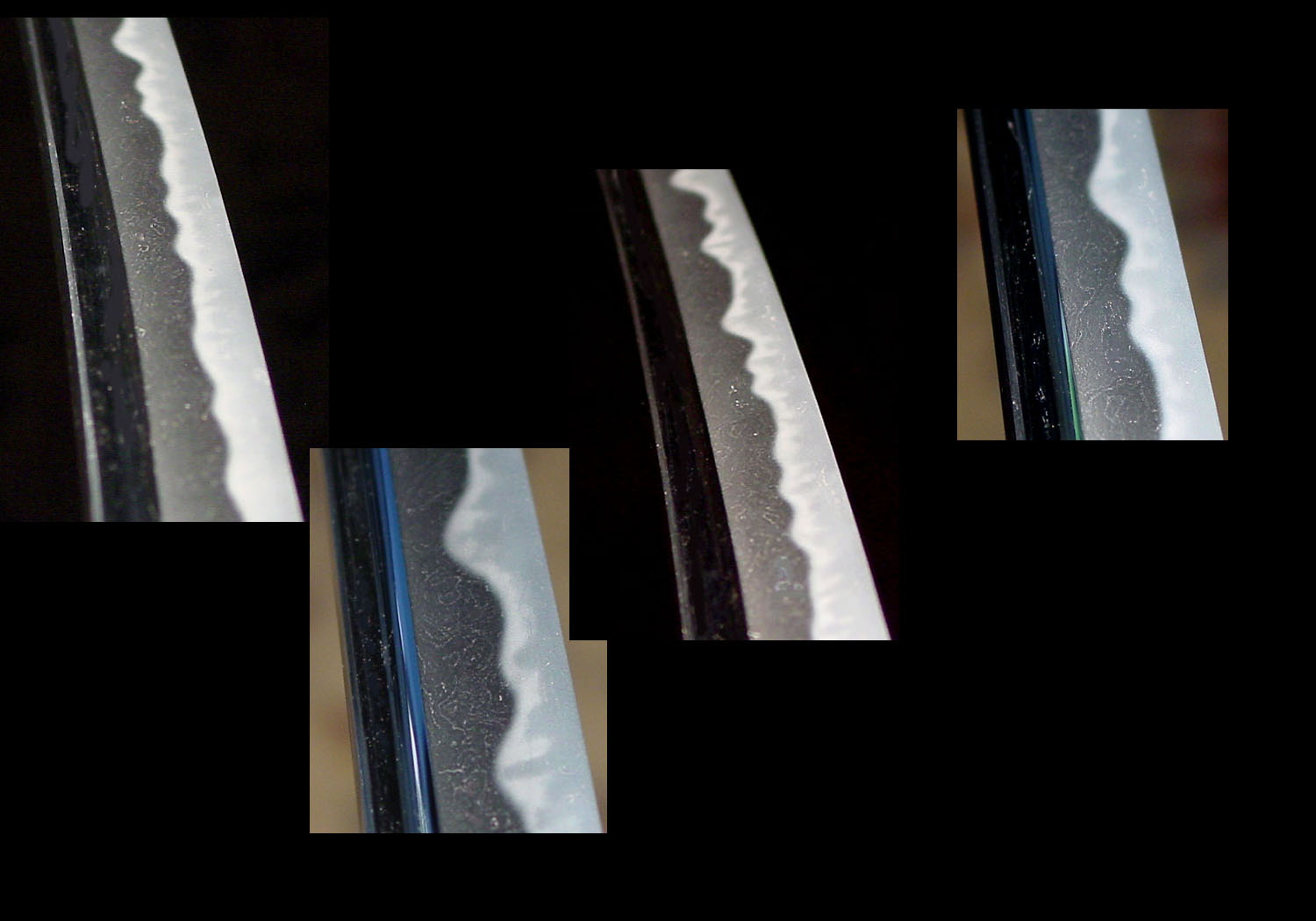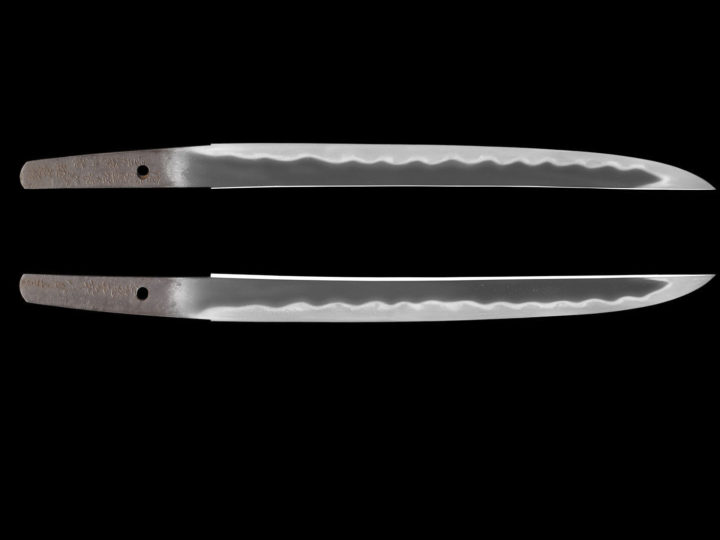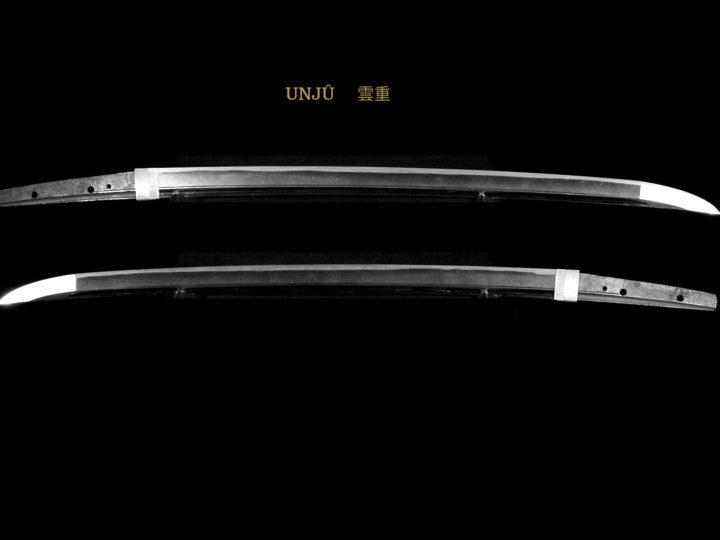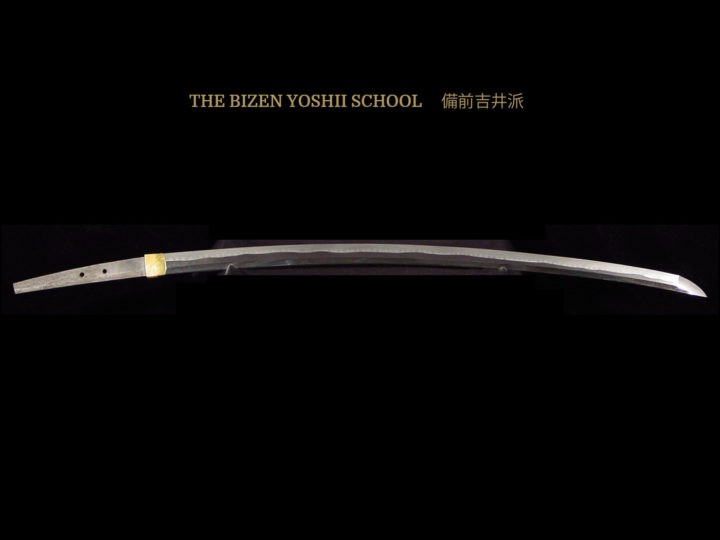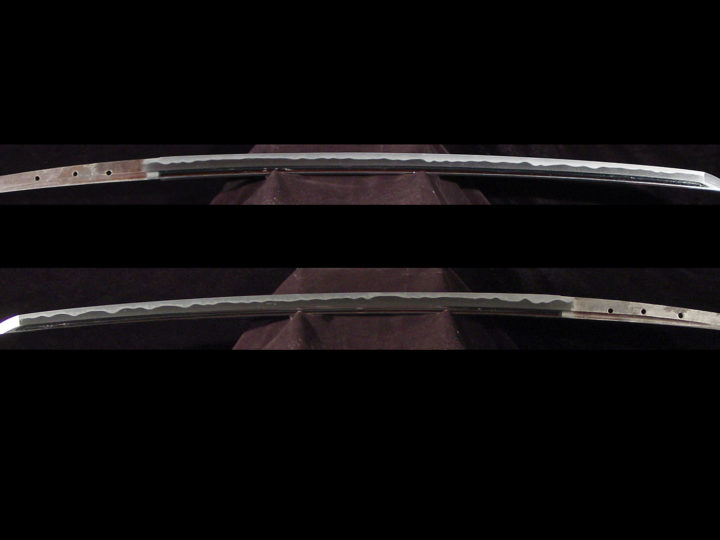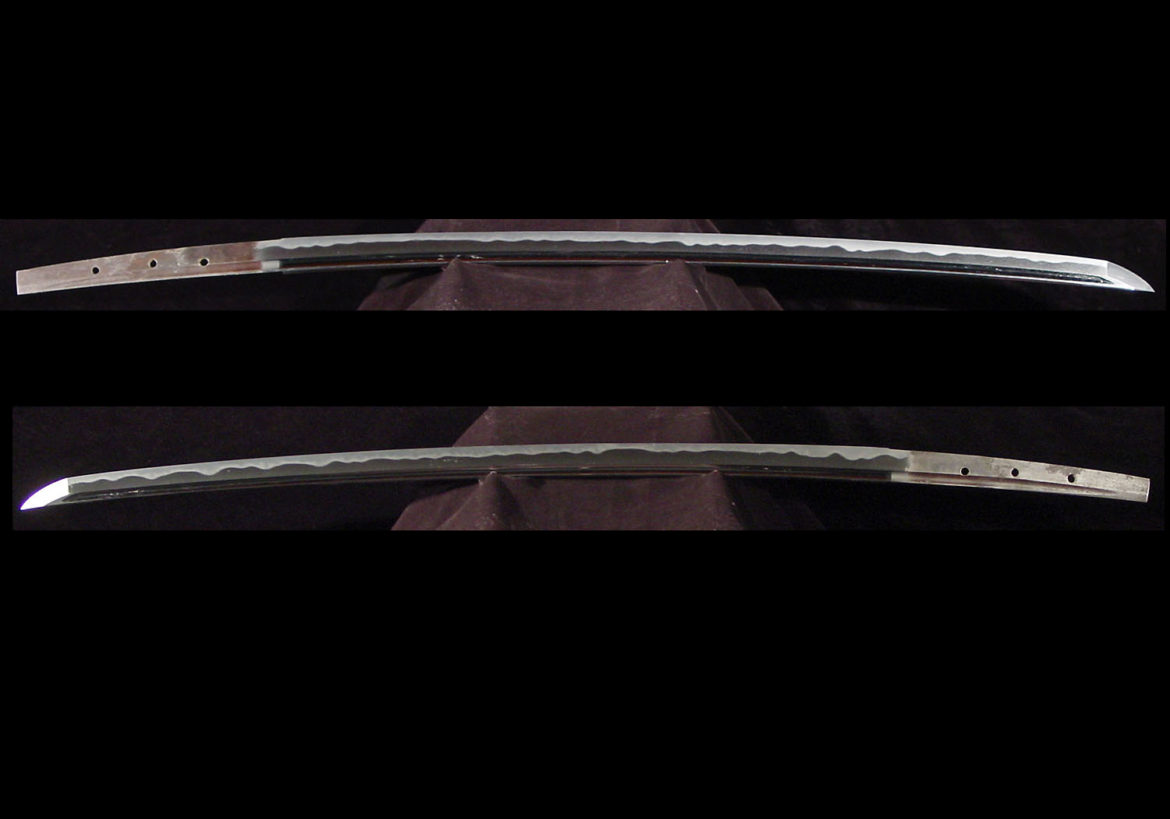
This is a Jûyô Tôken sword by the well known Omiya Bizen (大宮備前) smith, Morikage (盛景). Morikage (盛景) is said to have been the son of Ômiya Moritsugu (大宮盛次). He worked around the Enbun (延文) era or 1356. In the Meikan, Morikage’s (盛景) line is precisely recorded: the one who worked from Enbun (延文-1356) through Eiwa (水和-1375) is considered to be the shodai. The one who worked from Eitoku (水徳-1381) through Ko-ô (康應-1389) is said to be the nidai. Finally the one who worked from Meitoku (明徳-1390) through Ôei (應永-1394) is referred to as the sandai. Since there are only thirty-eight years in total encompassed between the beginning of Enbun (延文) and the beginning of Ôei (應永), and because the signature inscriptions throughout all these years are more or less uniform, a strong case for just one generation can be made. In fact, it is somewhat silly to attribute three generations in this short time span.
The works of Morikage (盛景) of the Ômiya (大宮) branch were largely similar to that of Kanemitsu (兼光) of the main line. Upon close comparison, however, one notices differences in overall quality, fineness of the jihada, prominence of the utsuri, etc. This closely parallels the relationship and differences in the works of Kagemitsu (景光) of the main line and Chikakage (近景) of the branch line of Bizen Den during the Kamakura era.
As a side note, we should note that there are signed examples where Morikage (盛景) signed with the long signature Bishû Osafune Morikage (備州長船盛景). The workmanship of these swords, especially the use of gyaku-tagane (reversed chisel strokes) show a closer relationship to the Osafune “branch” school of Chikakage (近景) and Yoshikage (義景). This would tend to indicate the possibility of a closer working relationship with the branch Osafune line than has been traditionally accepted.
We must also take into account that such smiths as Morikage (盛景) or Moritsugu (盛継) also left signed examples where they engraved their large sized signatures with a thick chisel to indeed be in Kunimori’s lineage, and to be the true smiths in the Ômiya School. Thus, a new explanation on these different smiths has been put forth, which, has forced a re-examination of the explanations that have existed up to now.
Morikage (盛景) left us many fine works including undated tachi probably from the Jôei (貞治) era 1362-1368 which has been designated to be a Jûyô Bunkazai. Another tachi dated Ôan hachi-nen go-gatsu hi (應安八年五月日) or 1375 has been designated a Jûyô Bijitsuhin.
The following are a translation of the Jûyô Tôken papers for this beautiful sword:
Designated Jûyô Tôken at the 45th Shinsa of 29 October, the 11th year of Heisei (1999)
Katana, Unsigned: Ômiya Morikage (大宮盛景)
Measurements: Length: 69.9 cent.; Curvature: 1.4 cent.; Width at Base: 2.8 cent.; Width at Point: 2.1 cent.; Kissaki Length: 4.0 cent.; Nakago Length: 21.3 cent.; Nakago Curvature: 0.1 cent.
Characteristics: The construction is shinogi-zukuri with an iori-mune. The blade is somewhat wide, and the thickness is average. The curvature is shallow and the medium-sized kissaki is somewhat long. The kitae is itame mixed with mokume that has a prominent hada feeling. The jigane is covered in ji-nie with a mixing in of jifu, and the midare-utsuri is prominent. The hamon is a mixture of various type of hamon such as gunome, ko-gunome, togari-ba and ko-chôji. There is ko-ashi and yô activity. Although the habuchi is nioi based, it is covered in ko-nie, and there are streaks of sunagashi. There is also kinsuji activity and small tobiyaki. The bôshi is midare-komi with a ko-maru tip and somewhat long kaeri. There are bôhi carvings on both sides of the blade that taper off onto the nakago. The nakago is ô-suriage, and the nakago-jiri is kiri. The yasurime are katte-sagari, there are three mekugi-ana, and the blade is unsigned.
Explanation: The Bizen Ômiya School is said to have begun with the founder of this group, Kunimori (国盛), who moved from Inokuma Taigû, a shrine in Yamashiro, to Bizen. Although Morikage has come to be the representative smith of this group, he signed with such long signatures as Bishû Osafune Morikage (備州長船盛景), and, moreover, in recent years, based on such shared features as his style of workmanship, and the reverse chisel (gyaku-tagane) he used to engrave his signature, this smith has been placed in the lineage of such branch Osafune sword-smiths as Chikakage (近景) and Yoshikage (義景). Nonetheless, we must take into account that such smiths as Morikage (盛景) or Moritsugu (盛継), who engraved their large sized signatures with a thick chisel to indeed be in Kunimori’s lineage, and to be the true smiths in the Ômiya School. Thus, a new explanation on these different smiths has been put forth, which, has forced a re-examination of the explanations that have existed up to now. Morikage’s style of workmanship is broad with notare based hamon that have a mixing in of chôji or gunome and a midare-ba that has flamboyant variations. There are also works with hamon that are essentially squared-gunome, as well as works with an Aoe style suguha, so that his styles of workmanship are varied.
As for this sword, the kitae is itame mixed with mokume and a mixing in of jifu, and the midare-utsuri is prominent. The hamon is a mixture of various types of hamon such as gunome, ko-gunome, togari-ba and ko-chôji. The yaki-ba can be seen as a midare-ba with variations, and as noted previously, these features display the characteristics in Morikage’s style of workmanship. Among similar swords, the workmanship is excellent, and both the ji and ha have no weak features, making this a very healthy blade.
PRICE: SOLD




